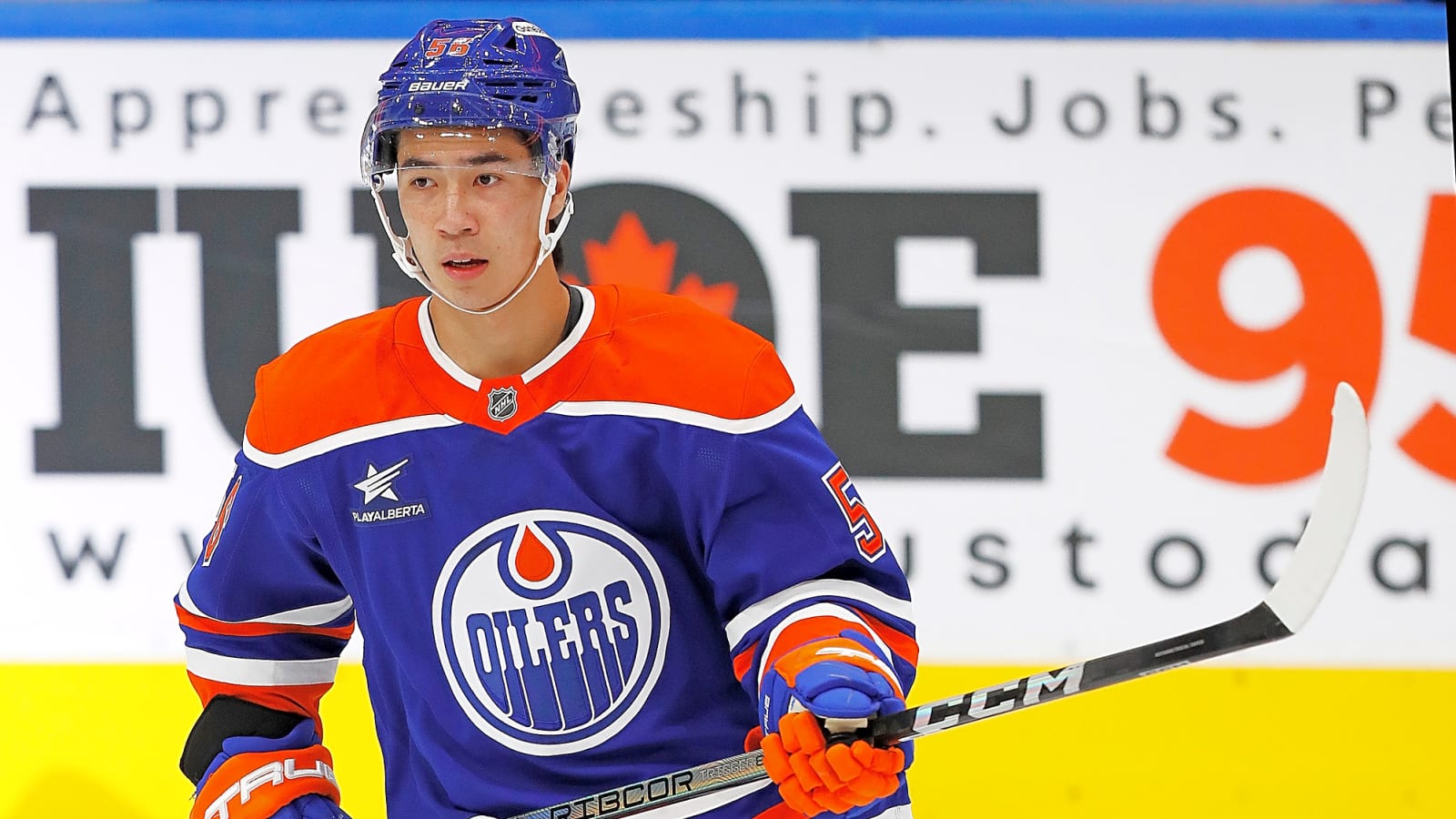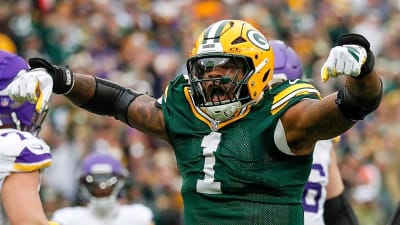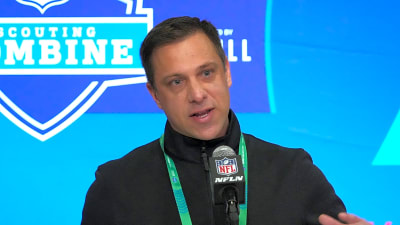
Welcome back to The Oil Rig Edmonton Oilers Prospect Rankings for 2025. This time around we are taking a look at London Knights forward, William Nicholl. Touted as a possible draft steal, Nicholl has built up more and more success in his draft plus one year as a key depth peice for the Knights.
As far as the staff at the Oil Rig goes, everyone but one voter had Nicholl on their ballot. The OHL product was voted anywhere from the fifth to ninth best prospect in the Oilers system by our writers.
| Position | Year Drafted | Highest Ranking | Lowest Ranking | 2024 Ranking |
|---|---|---|---|---|
| Center/Left Wing | 2024, 7th Rd, 196th Overall | 5th | Unranked | Unranked |
Nicholl’s development so far
The Ottawa-born product grew up in the Ottawa Myers Automotive minor hockey system playing all the way up until his U15 season in 2020–21.
In 2021–22, the 6’0” forward made the jump to the Ottawa Senators U18 program where he led the Senators in production with 30 points across 30 games as a 15-year-old. This performance led to a third round selection in the 2022 OHL draft by the London Knights.
Starting in the 2022–23 season the Knights assigned the young Nicholl to the GOJHL St. Thomas Stars, which being just outside of London allowed the Knights staff a closer view of the budding player. Nicholl once again led another team in production, which led to a handful of OHL appearances.
In his draft year Nicholl made the Knights out of training camp and largely served as a bottom-six energy forward on a star studded Knights team. He played his role well, and garnered enough NHL interest to get drafted by the Oilers in the seventh round, 196th overall.
| Season | Team | League | Games Played | Goals | Assists | Points |
|---|---|---|---|---|---|---|
| 2022-23 | St. Thomas Stars | GOJHL | 43 | 20 | 44 | 64 |
| 2022-23 | London Knights | OHL | 5 | 1 | 1 | 2 |
| 2023-24 | London Knights | OHL | 65 | 6 | 14 | 20 |
| 2024-25 | London Knights | OHL | 66 | 21 | 36 | 57 |
This past season, Nicholl started to have a breakout season and emerged as more of a top-six secondary scorer and all around special teams option for the Dale Hunter-led Knights. This also saw a jump in his ice time to 16:14 per game with 0:44 of power play time, and 1:28 of penalty kill time.
With the departure of several key forwards next season this should give Nicholl a large opportunity to carve a top line role out, amplifying his scoring and defensive acumen.
Nicholl’s strengths and weaknesses
Strengths
Nicholl plays a two-way forward’s game, with a strong combination of physicality and playmaking he excels most as a rush based attacker and disruptive forechecker. His game is highlighted by quality hockey sense, a strong compete level, and notable physicality.
Senses
Nicholl plays a thinkers game. From his offensive/defensive instincts, play anticipation, and playmaking he routinely displays creativity, NHL level play-ideas, and as a result generates frequent chances against.
In defensive transition, the Oilers draftee creates space then immediately takes it away, which shows defensive awareness through a quality active stick, frequent scanning, and evident lane awareness. In defensive transition the Canadian often blocks passing lanes with stick and body.
Nicholl’s ability to anticipate both in defensive zone play and on the backcheck shows good defensive instincts through above average play processing, notable risk assessment, and play anticipation. Just as an opponent thinks he’s free of Nicholl, the London Knight product emerges challenging him again.
This defensive upside helps grant insight into Nicholls role as a capable penalty killer where he averaged 1:28 of TOI per game this past season.
In offensive transition Nicholl’s is a consistent contributor generating nearly four entries per game. In there entries the late rounder displays notable play processing, which indicates an advanced hockey IQ.
This hockey IQ is demonstrated through deception, space creation, and shows notable rush instincts through quality offensive awareness, playmaking, and when all else fails, net crashing. All of these elements help explain the forwards 1.69 chances per game.
The give and go is Nicholl’s specialty, and which shows his hidden offensive instincts through pressure awareness that leads to defender manipulation, smart passing plays, defender manipulation, and quality timing.
Nicholl even has a 17% conversion rate on those 1.69 chances per game.
In established offensive zone, Nicholl displays an evident play reading aptitude, as he frequently supports offensive pressure from his teammates, initiates cycles, and serves as a strategic net front anchor for the London Knights.
Compete ;evel
Nicholl has a non-stop compete level exemplified by a relentlessness, a higher end motor, and evident hustle. The forward is always in movement no matter where he is on the ice. Nicholl’s compete level remains consistent and he rarely takes a shift off.
This compete level is most evident in defensive transition where Nicholl plays an active and engaged role on both the forecheck and backcheck.
This level of play engagement means the Knights forward is quite the opportunist always probing for space and to force an opponent into a rushed decision, which hints at developing situational awareness.
The seventh rounder’s forecheck game employs strategic defensive pressure through quality angles of attack, timing, and play disruption elements due to his active stick and defensive awareness. A level of intensity and hustle also makes Nicholl a frequent threat on the forecheck.
If the Oilers pick can get opponents to the boards, this is where his defensive pressure and physical pressure combine to form a deadly combo that interrupts opponent breakouts, and slows the pace of play down to favour the Knights.
Physicality
His physicality is highlighted by strong body positioning, board play aptitude, and pressure absorption. This physicality blends with his senses and compete level to make Nicholl an aggressive play supporter that often favourably uses his frame and muscle mass to swing momentum in 5v5 play.
On the forecheck, this physicality blends well with Nicholl’s compete level as it allows him to routinely establish favourable body positioning that results in consistent defensive pressure, simple puck strips, and chances for from the 3.5 takeaways per game that Nicholl generates.
In transitional play, Nicholl also shows healthy aggression, which allows him to be much more of a wrecking-ball than he is in zone play.
In the defensive zone, the Canadian forward employs good physical pressure through high frequency board play, quality board play leverage, and despite his 0.34 hits per game, Nicholl’s rarely shies away from physical engagement.
Despite not being as physically mature as opponents, Nicholls engaged in 12 puck battles per game and won 50% of them.
On the offensive side of the puck Nicholls shows good balance, pressure absorption, and the clean ability to skate through opponents, which allows for offensive pressure to remain consistent.
The Oilers pick also plays the role of a capable net front screen, showing grit, toughness, and willingness to get to the dirtier areas.
Weaknesses
There are some limitations to Nicholl’s game, which are most evident in his around average skating, puck handling, and below average shooting ability.
Skating
His skating needs some growth to be better equipped for the NHL. Primarly the seventh rounder’s skating suffers from some upright posture, which produces mechanic problems around agility, a shorter stride/extension.
These issues also compound in his skating form as this shorter stride and extension generally produces less power and acceleration, which means the forward is in constant stride recovery. This limitation in power is particularly noticeable in offensive transition as he struggles to generate separation speed.
With that being said fundamentally his crossovers are clean, and he has hints of agility with some quality cutbacks, and decent enough route creation. If Nicholl cleans up his skating form this could increase the effectiveness of his gap usage and angles of attack, making him even more effective in transitional play.
Puck handling
In terms of puck skills, Nicholl shows some limitations in handling ability, pass receptions, and does have lapses in spacial awareness. Refinements in puck handling and control would further increase the effectiveness of Nicholl’s rush plays.
There was also a tendency for these handling issues to collapse even more in plays when Nicholl’s under pressure, which helps explain his four giveaways per game. With his frame and mass, further improvements to his puck protection mechanics would add another layer to his defensive game as well.
The forward also tends to have moments of sudden spacial awareness lapses, which often resulted in Nicholl’s skating straight into pressure, generating those aforementioned turnovers. Minor tweaks to his decision making away from the puck should make his positioning even more effective.
Shooting
Nicholl is more of a passer than a shooter. That being said, the forward’s shooting does possess a few minor issues like a quicker release point, lower accuracy, and limited power production.
Mechanically, the Oilers’ prospect needs a better shooting form, as his current release point, weight transfer, and leverage might limit his finishing at the next level. This limited lethality compounds as the Knights forward averages 2.6 shots per game, with only a 64% accuracy for the 2024–25 campaign.
This poorer accuracy is the result of less than ideal power and placement. Everything else in terms of offensive poise, deception (fake shots), and shot selection are well on their way to being pro-ready. Nicholl’s knows where on the ice to shoot from often identifying slot and middle-ice chances frequently.
This shot selection aptitude is shown by his 0.28 goals expected rate.
These shooting shortcomings mixed in with his physicality acumen explain his role largely as a bumper or net front presence in offensive zone play.
This fine-tuning of his shot mechanics is something that will come with time, and is not a red flag for younger prospects. This is especially not surprising as the Canadian forward has been used in more of a depth role, resulting in fewer in-game reps than others.
Nicholl’s next steps
As a much more of a raw prospect (as most late rounders are), his first step to an NHL pathway is to become a star in the OHL. With Nicholl returning to the London Knights next season, and a lot of key talent leaving, expect the Oilers seventh rounder to get a lot more opportunity and ice time next season.
The Knights organization also has a reputation to create NHL ready talent, so this bodes well for his overall early growth.
With that being said, It is likely that Nicholl, much like other late rounders, will need a season or two in the AHL with Bakersfield before the Oilers’ draftee will fully compete for an NHL roster spot.
NHL ETA: four years
Potential: Ceiling of a top-nine energy forward
More must-reads:
- Canadiens players take firm stance on Phillip Danault trade
- Canadiens receive positive Mike Matheson injury update
- The '2004-05 NFL passing leaders' quiz
Customize Your Newsletter
 +
+
Get the latest news and rumors, customized to your favorite sports and teams. Emailed daily. Always free!








